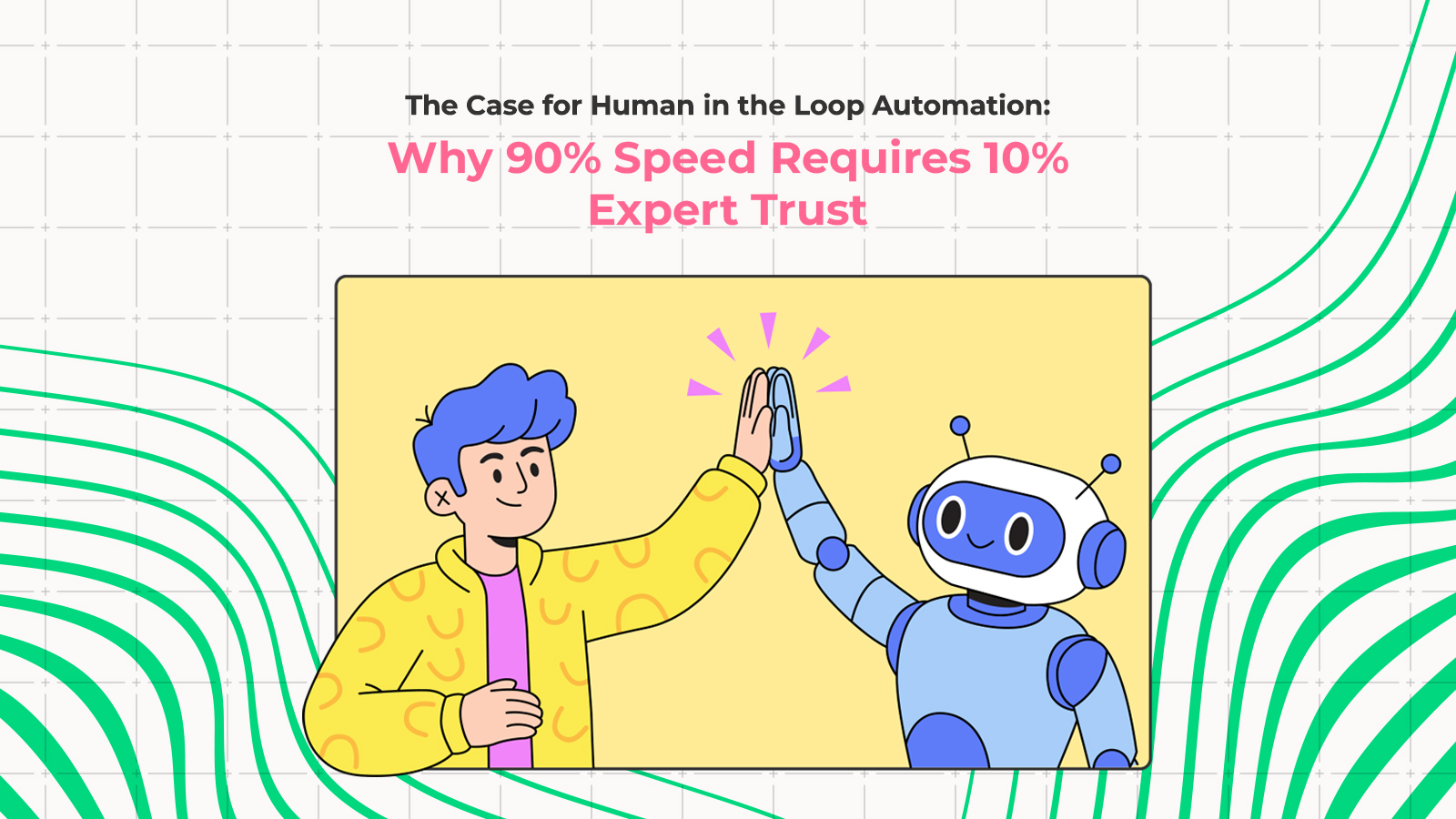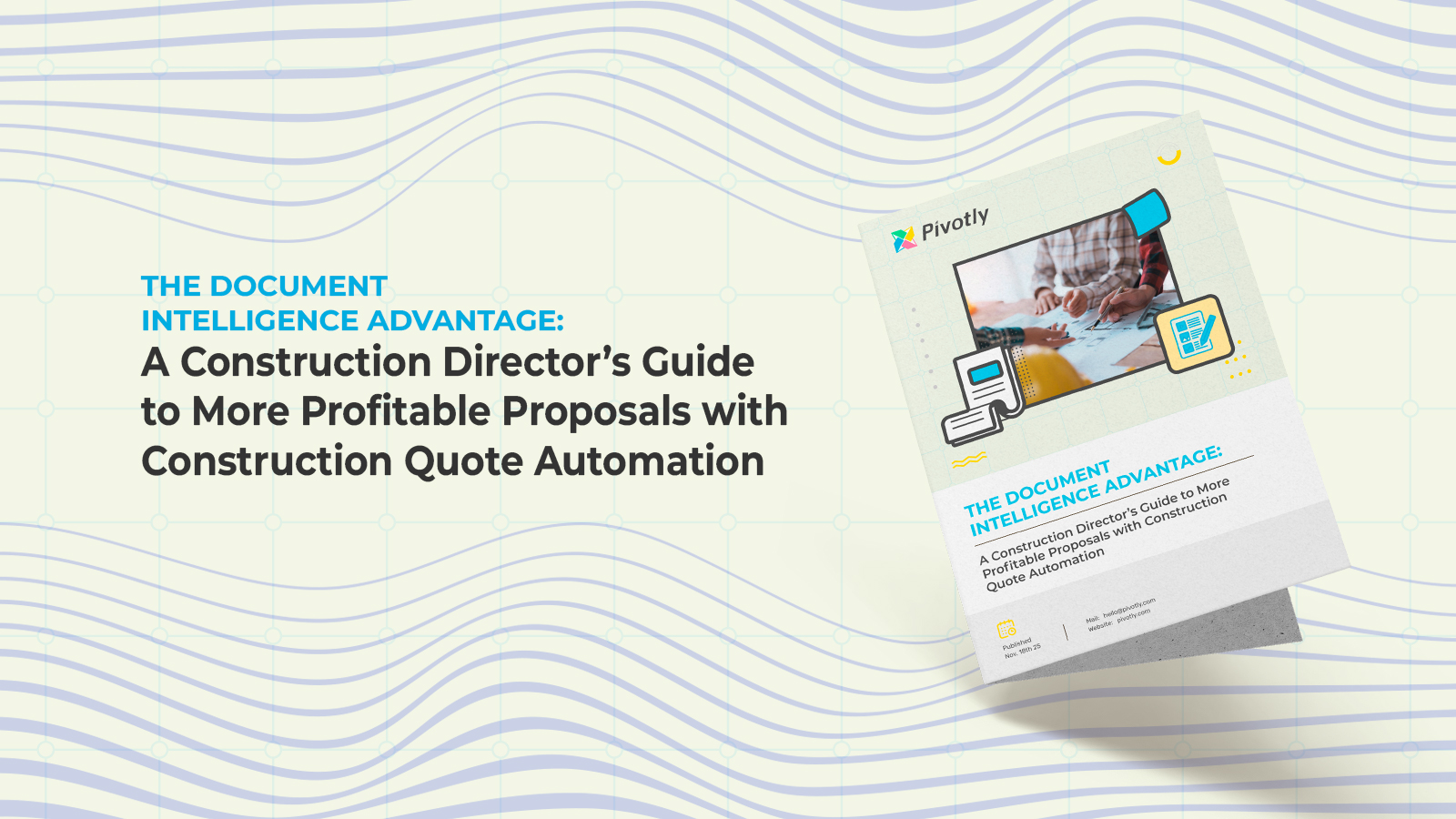Pivotly CEO Dan O’Keefe breaks down a critical shift in how companies must approach technology investment.
He reveals that while fundamental business data (like a sales order) has remained constant for over 100 years, Cloud and AI have entirely changed the economics of building software.
Dan explains that the old financial bottleneck (the high cost of custom development) is gone. It has been replaced by a new, more dangerous risk: complex solutions and data integration.
Watch as Dan lays out how your business can take advantage of the AI-accelerated world, sharing these summarized insights:
Core business processes, like a sales order, haven’t changed in a century, but the speed of technology development is exploding due to Cloud and AI coding. This is making custom apps and automations dramatically cheaper and faster to build (as much as 80% less expensive).
But this acceleration only increases your reliance on fragmented data and slow, one-off integrations. The financial failure point has shifted: it’s no longer the cost of building the app, but the delay and ultimate failure of the app because it can’t reliably get the live data it needs from your disconnected systems.
Drastic Cost Reduction:
Custom apps are now the cheaper option. Stop trying to force a rigid ERP to do what you need. AI-powered development means you can build that crucial app for 80% less than anticipated, making your most pressing business problems instantly solvable and delivering an unprecedented ROI.
Increased Development Speed:
Turn ideas into working solutions in days, not months. Cloud and AI aren’t just making software cheaper; they’re killing the wait time. When developers are up to 70% faster and systems spin up instantly, your financial plans can count on immediate value realization. No more two-year project cycles slowing down revenue.
Data as the New Bottleneck:
Your money dies in data silos. The financial risk has entirely shifted. It’s no longer about the app cost, it’s about the brittle foundation it sits on. If your new, cheap, fast app can’t get live, clean data from your disconnected systems, the investment is wasted. You keep your apps, but you must lose your data silos first.
Transcript:
So If you look back over time, think back before there were any systems. Businesses were still operating and it was the same data. It was a bill of sale. It was customer data. It was product data. It was an invoice, an insurance claim. It was just all on paper. But it’s the same transactions. It’s the same data we’re dealing with today.
But what’s changing on the top there is we’re going from Quill to Typewriter to ERP, now AI, right? The systems around the data are the things that are changing so fast that it’s hard to keep up with it. But a sales order, I mean, think of a sales order today. Sales order is the same structure that it was 100 years ago, right? It was, who is the customer, what’s the order number, what’s on the sales order, when do they want it delivered, what’s the price, done, fill it, move it over to invoicing.
And then the invoicing process is still the same, just a whole bunch of automation on it. So we can do a thousand of them with one person rather than two of them with one person.
So what’s going to happen is AI is going to dramatically accelerate how much software we develop. There’s going to be a capability for you. I talked about this in the panel a little bit. It’s going to be a capability for you, a capability for you that’s optimized for your business and your channel and your product and your right?
And it’s to become cheaper and cheaper to solve those problems because you can make stuff so fast. So we had a, we had a, uh, Slick has a problem called Fanonzo, and we’re launching this here pretty, uh, in the next couple months for this guy. And Finanzo was like a combination of rocket money and rocket mortgage. And the lead developer came into Slick because we’re scaling up to do this project. And, and he became aware of what we were charging. I talked to Darren the other day, and he said, it’s a miracle. I can’t believe. We’re going to deliver. We’re going to make it. We’re going to do it. We’re doing it 80 % less than Darren would have anticipated.
And I think what any normal human would have anticipated, right? And here’s why. The first thing is the cloud is like legitimately here, no, right? I mean, it’s the way that you do business. We can scale up and we can get like an ecosystem due to development on, we can get that spun up in like a couple hours. Like it’s like click a button, scripts run, boom. There’s your Git, there’s your servers, there’s your database, there’s everything. There’s your code base, right?
We’re even like for a lot of our startups that we support, we actually create the, or I should say, not our startups, but a lot of our small businesses, what they’re interested, that Slick is supporting is they want these things made and then they want their thing made multi -tenant, right so that when we make when we make us a solution for them to solve their business problem they can turn themselves into a SaaS company and go sell that product for their niche business everywhere right and so that’s the first reason you can do with things faster and cheaper now.
The second reason is AI coding our developers are all telling us they’re going minimum 20 percent faster many of them are telling us they’re going 60 70 percent faster as a result.
It’s just you just you just crank. You you just go, go, go, go. It’s almost like as fast as you can conceive the idea, that’s how fast you can get the idea onto the end of the app, right? And it’s approaching that speed. Global collaboration is next level now. I mean, if there’s one thing that COVID did, made it’s really good at remote work. And now we’re working with, you know, our models are generally super hybrid, U .S.-based and offshore based in different regions. We have people in Spain, Bangladesh, Philippines. But the point is, is that regardless of where people are, working with them in a collaborative fashion is so easy these days.
And then the last thing is, when you build a product to do what you need or to do a product what you need, you don’t need it to do everything. You just need it to do what you need and what you need. So you do the 20% of effort for the 80% of value. Like just solve the problem you’re trying to solve and solve it quickly. That was kind of a topic on the last talk, too. And so we… That’s the other half of what AI is going to do.
But every app that we build like this, what does it need? Data and integration. We don’t build a single app that doesn’t live in an ecosystem with other technologies. And it isn’t because they want to, it’s because they have to. You need financial data, you need transaction data for the business, you need employee data, like constantly, right?
How much is your data workflow costing you?
Check out our calculator to get an idea of how much data fragmentation is really costing you
Calculate my costsOr, Take the Next Step:
No high-pressure sales pitch, just a practical plan to move forward.


